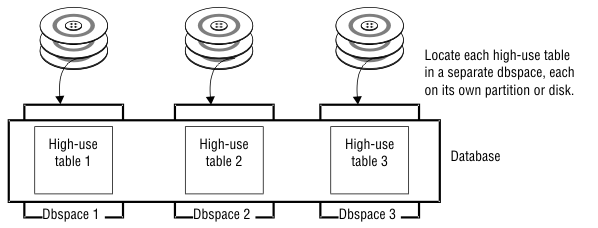
You can place a table with high I/O activity on a dedicated disk device and thus reduce contention for the data that is stored in that table. When disk drives have different performance levels, you can put the tables with the highest use on the fastest drives. Placing two high-use tables on separate disk devices reduces competition for disk access when the two tables experience frequent, simultaneous I/O from multiple applications or when joins are formed between them.
To isolate a high-use table on its own disk device, assign the device to a chunk, assign that chunk to a dbspace, and then place the table in the dbspace that you created. Figure 20 shows three high-use tables, each in a separate dbspace, placed on three disks.
